Enabling Environmental Stewardship
Current Enforcement Mechanisms Slow Response Times and Fuel False Media Narratives About Natural Gas Operators
May 10, 2024

By the CNX Environmental Strategy Staff
CNX Midstream Operating Company (CNXM) and CNX Gas Company LLC (CNX) have recently been assessed civil penalties by the Pennsylvania Department of Environmental Protection (PA DEP) to address two separate Notice(s) of Violation (NOV) that were issued for erosion and sediment control violations following self-reported slips at two separate locations in March of 2020 and March of 2021, respectively.
As part of CNX’s Radical Transparency efforts, we address both events here: what occurred; the steps taken along the way to report, stabilize, investigate, permit, and remedy the issues; the penalties assessed by the PA DEP; and opportunities for improving the speed and efficacy of the system.
Slip #1: Greenhill to Hopewell Pipeline
Let’s begin with the CNXM Green Hill to Hopewell Pipeline slip in Center Township, Greene County. This slope slip event was discovered and self-reported by CNX to the PA DEP on March 19, 2020. For context, a slip (sometimes referred to as a slide) describes movement of soil, including topsoil, resulting in the surface land becoming unstable which could potentially lead to erosion.
This slip was identified as part of our routine inspections of sites and construction activities. The area is a vegetated hillside. The slip was determined to originate approximately 120 feet away from our permitted area, eventually sliding into and encroaching onto our permitted area.
Despite the slip not being caused by CNX and not originating on our permitted area (much like a neighbor’s tree falling into your yard), we acted immediately. We promptly reported the event to the PA DEP. We also took emergency preventative measures to add additional erosion and sediment controls to stabilize the site and prevent sediment from entering a nearby stream (an intermittent flowing ditch no more than a couple of feet in width).
The sediment from the slip was not from a natural gas production site, but rather was soil, clay, and rocks from the hillside (similar to slides seen traveling along many roadways in Pennsylvania). We quickly initiated an enhanced inspection protocol for the area and engaged geotechnical professionals to assist. The geotechnical investigation determined that the area where the slip originated was above a light gray clay layer (referred to as “slip clay” in western Pennsylvania) and other loose, unconsolidated sediment and rocks (“colluvial soils”), which may have caused the slip.
Before the PA DEP performed its initial site inspection (over four months after we reported the slip), we completed our investigation and developed a repair plan. Unfortunately, regulations dictated that the repairs would require a permit modification due to the need to move dirt beyond our permitted boundary (again, because the slip originated outside of our permitted area). Thus, we were prohibited from performing substantial repair work to implement the long-term solution until we had approval from the PA DEP.
We submitted the modification to our permit to the PA DEP on June 24, 2020. The PA DEP made its first site inspection on July 10, 2020, the day after a heavy rain event which, paired with cattle traversing the area, impacted the emergency erosion and sediment controls that were in place; CNX had not yet had a chance to reestablish damaged controls.
PA DEP eventually approved the permit to allow us to complete remediation on September 24, 2020, six months after the event was reported. CNXM regraded the slope according to specific engineering design plans, seeded and mulched, and installed temporary erosion and sediment controls in fall of 2020. We then waited for vegetation to be reestablished. As vegetation was being reestablished in 2021, the temporary erosion and sediment controls allowed some soil and rocks to fall into a roadside ditch next to a farmer’s field. By mid-December 2021, all issues were corrected, the area was stabilized in accordance with the geotechnical design, and all erosion and sediment controls were properly implemented and maintained.
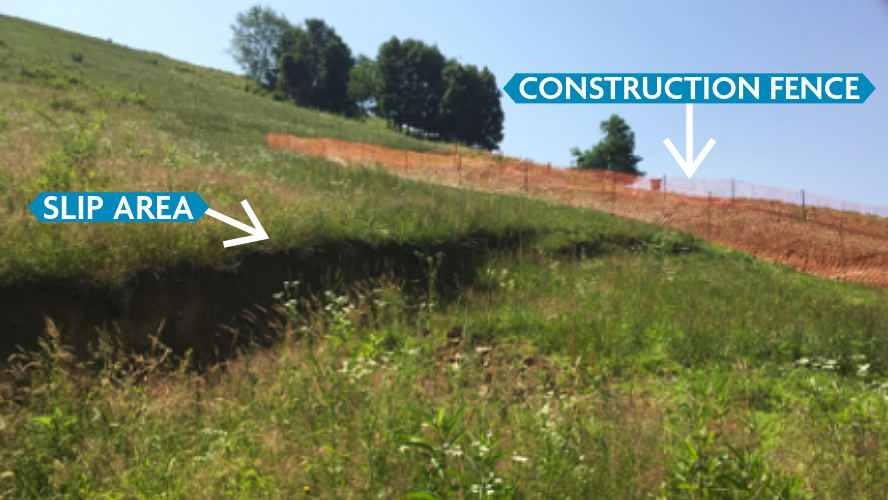
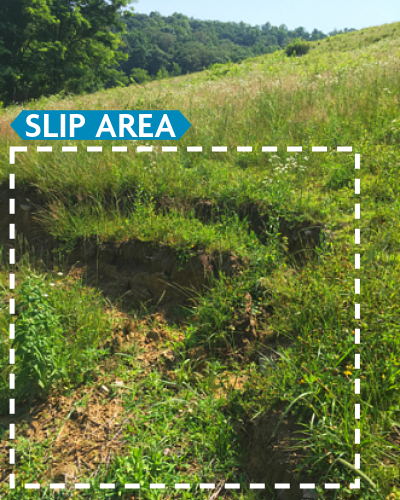
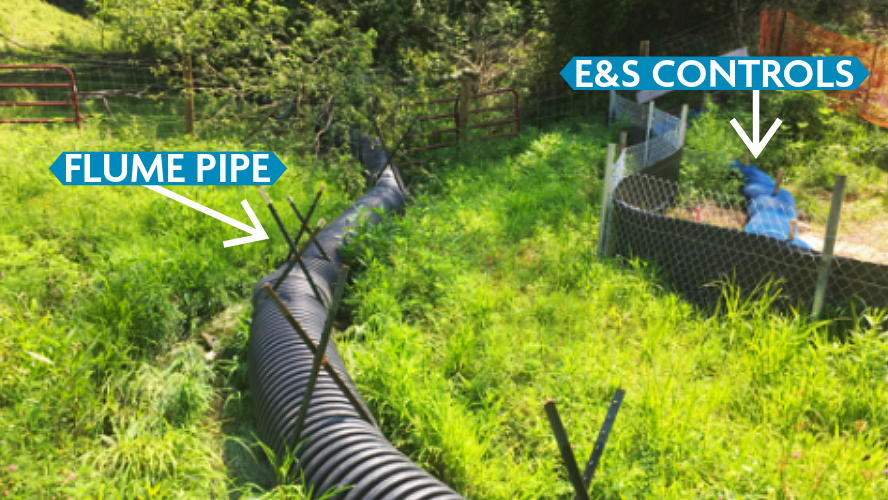
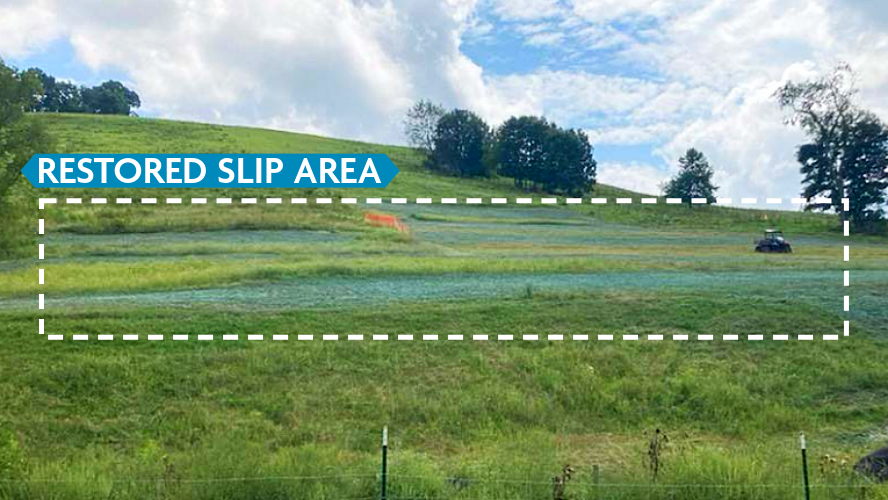
Slip #2: NV26 Pad
The second slip event (also self-reported) was on well pad NV26 in Morris Township, Greene County. CNX discovered the slip and reported it to the PA DEP on March 5, 2021. On March 8, 2021, the PA DEP inspected where CNX had taken immediate action to install additional erosion control measures and temporarily stabilize the area.
Prior to the slip event, the PA DEP determined that the well pad construction permit met the requirements for permit closure. But due to the size of the area required to remediate the slip, and since the original permit had previously been successfully closed, CNX was required to obtain a new permit to complete repair. Once again, this meant that we could not perform any substantial repair work to implement long-term environmental solutions until we had approval from the PA DEP.
This permit was approved on June 10, 2022, over a year from the date of the event. CNX initiated the repairs in fall of 2022 and work was completed in April 2023.
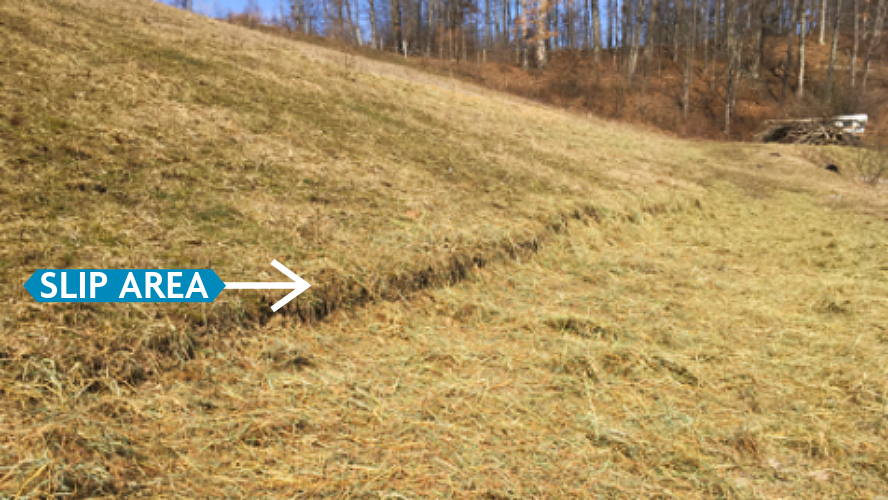
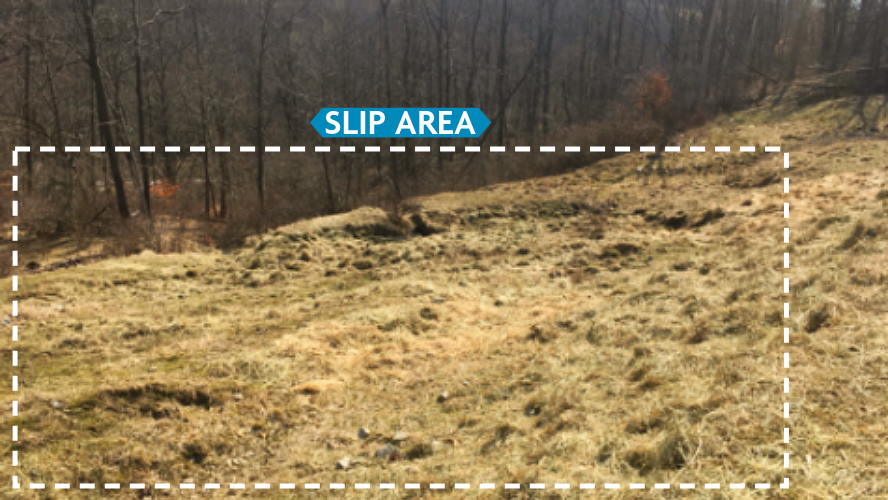
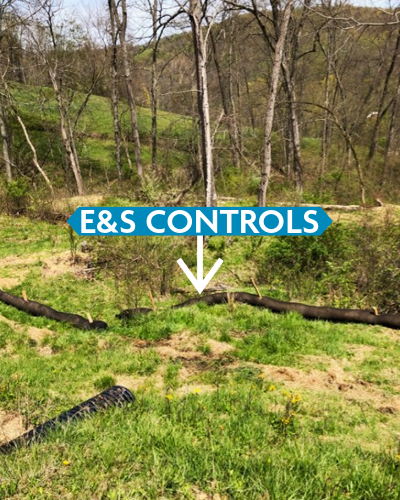
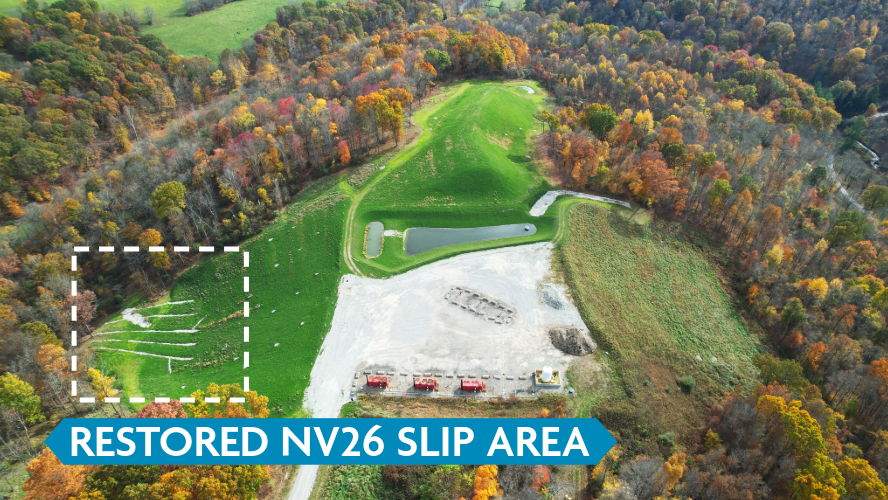
Opportunity for Improvement
The NOVs issued for both slips list sections of Pennsylvania laws or regulations that may have been violated in connection with a reported event. For example, slips that impact existing erosion and sediment controls, and each sediment control that fails or requires maintenance, can lead to the assessment of lump-sum penalties and/or daily penalties over the number of days the condition existed. Daily penalties are generally assessed from the date of inspection until the date that the repair permit is submitted. Guidance for how these penalties are calculated can be found in Civil Penalty Assessments in the Oil and Gas Management Program DEP Technical Guidance Document ID No. 550-4180-001. Act 13 (§3256) increased penalty amounts for unconventional well activity. The PA DEP has assessed a civil penalty of $134,450 related to the slip at the Greenhill to Hopewell pipeline, and $35,820 related to the slip at the NV26 location. CNX intends to pay the fines and close the matter, which avoids any lengthy/costly appeal process that would likely cost more than the fine.
To summarize:
- Both slips were identified by CNX and were self-reported to the PA DEP;
- Immediate actions were taken to implement emergency controls to avoid/minimize continuing erosion and sedimentation;
- The self-reporting notifications triggered inspections by the PA DEP which resulted in issuance of NOVs;
- CNX filed for and obtained permits and/or permit modifications necessary (per the regulations) to begin implementation of long-term solutions;
- CNX continued to inspect, manage, and maintain the areas while waiting on the permit approvals;
- The permit (i.e. permission to fix the issue) approvals took significant time to be approved; and
- CNX successfully remediated both slips once given authorization by the PA DEP to do so.
The biggest lesson learned with both events is that the current regulatory process consumes substantial lengths of valuable time. Slips and mud slides are common across Pennsylvania and repair is straightforward. But the regulations and process require months, and in some instances years, to toll before approval is granted to remedy a straightforward issue.
Such delay increases the potential for additional problems that short-term emergency measures are not designed to address or avoid. Additionally, penalties are often assessed on a per diem basis, penalizing entities for a delay that is not their making.
This harms all stakeholders in the Commonwealth. It distracts the regulator from protecting the environment and upholding the law. It bars the company from quickly fixing a problem. It exposes the local environment to unneeded, ongoing risk. And it imposes added cost to the taxpayer and unnecessary nuisance to the local resident.
There is a better way, a simpler way. Let’s create a shared sense of urgency for reviewing and approving permits to allow the industry to address slips and slides so that remediation work can start hours or days after discovery, not months or years. All will benefit.
CNX stands at the ready to work with policymakers and the PA DEP on finding that better way. That’s a core tenant of Radical Transparency.
You May Also Like



